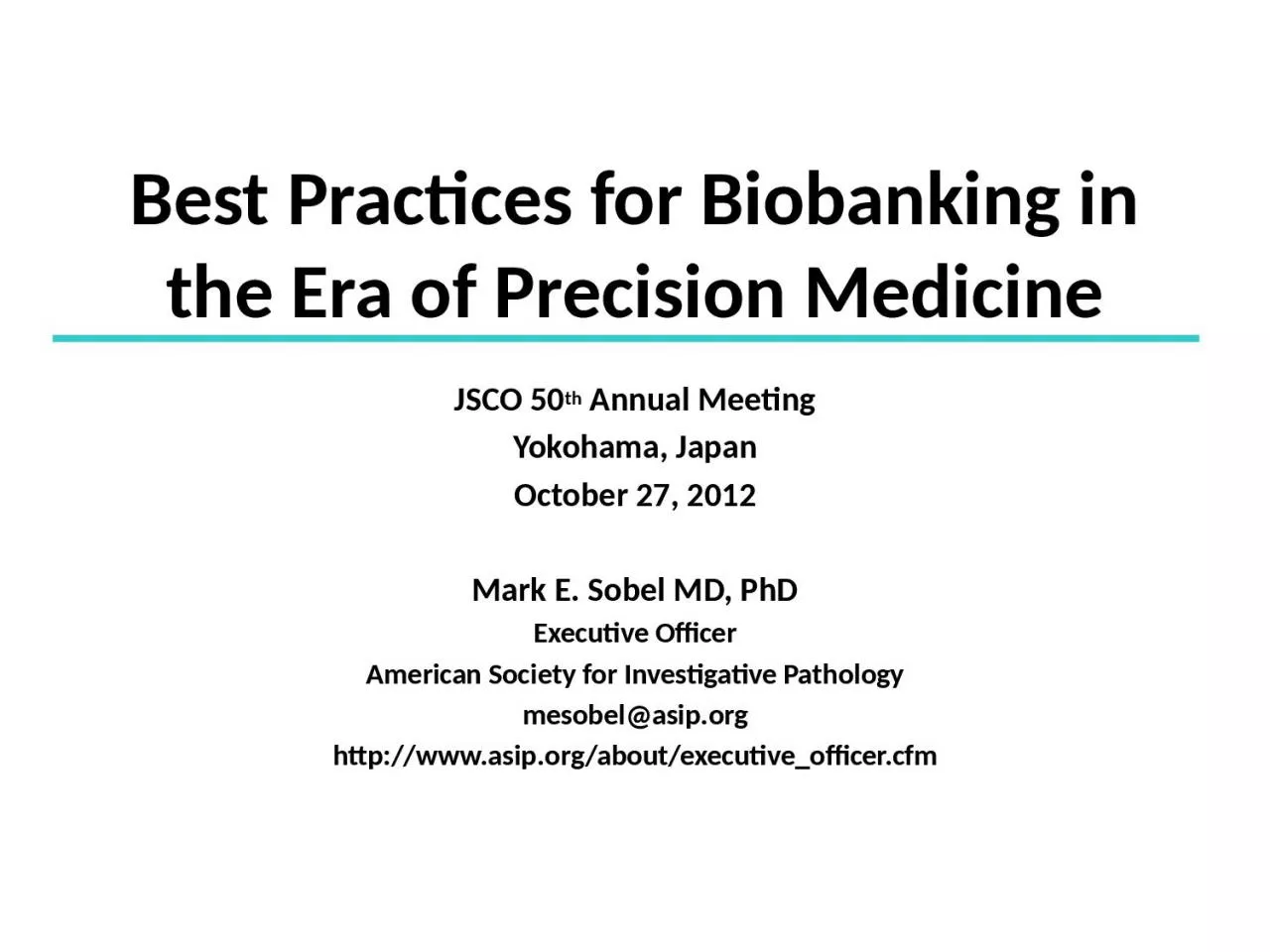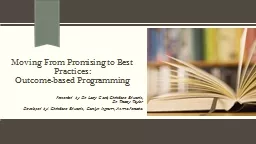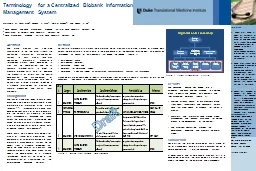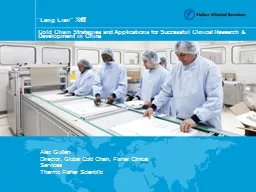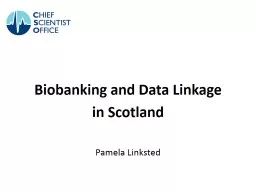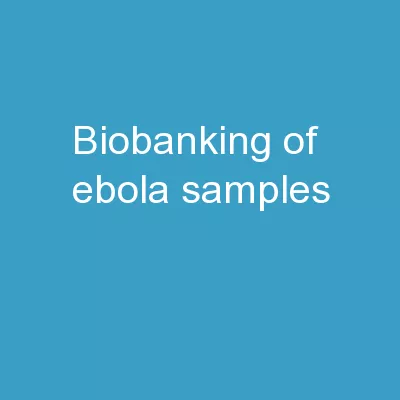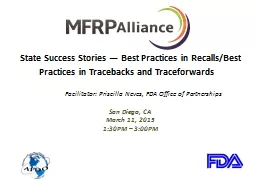PPT-Best Practices for Biobanking
Author : desha | Published Date : 2024-02-09
in the Era of Precision Medicine JSCO 50 th Annual Meeting Yokohama Japan October 27 2012 Mark E Sobel MD PhD Executive Officer American Society for Investigative
Presentation Embed Code
Download Presentation
Download Presentation The PPT/PDF document "Best Practices for Biobanking" is the property of its rightful owner. Permission is granted to download and print the materials on this website for personal, non-commercial use only, and to display it on your personal computer provided you do not modify the materials and that you retain all copyright notices contained in the materials. By downloading content from our website, you accept the terms of this agreement.
Best Practices for Biobanking: Transcript
Download Rules Of Document
"Best Practices for Biobanking"The content belongs to its owner. You may download and print it for personal use, without modification, and keep all copyright notices. By downloading, you agree to these terms.
Related Documents

